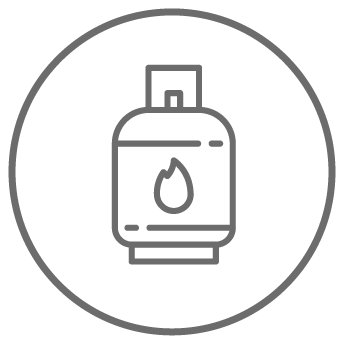Discovering refrigerant gases: properties, uses and advantages

Blas Villafranca first used the term “refrigerant” in 1550 in his treatise in which he explained how to refrigerate using potassium nitrate or saltpetre. In the past to refrigerate salts dissolved in water were used. Those created endothermic reactions, meaning they absorbed heat from outside. However, 200 years later the Scottish William Cullen created refrigeration technology, using a machine in which the cold comes from the evaporation of an aqueous solution brought to a very low pressure. This is how refrigeration based on the change of state of a liquid was born. It was only 100 years later that the indeed the theory of the refrigeration cycle was developed, based on the knowledge of thermodynamics, thermometry and the properties of gases.
Compressor is born
In 1834, Perkins created a refrigerator compressor using ethyl ether and in 1854 Twining, Harrison and Carrè created the first water-ammonia refrigerator. In 1866, carbon dioxide was experimented with, and in the late 1800s, a variety of refrigeration techniques were used including steam compression, absorption, compressed air expansion, and water evaporation at very low pressures.
Cooling based on natural refrigerants
Up to this time, refrigerants in use are all-natural and include water, ammonia, sulphur dioxide, methyl chloride, ethyl ether and methyl ether. In the first years of the 1900, steam compression technology predominated and ethers were abandoned because they were flammable and carbon dioxide because of the high working pressures. In 1920 was born the first refrigerator based on ethane and propane, but the dangerousness of these fluids led in 1930 to Freon 11, Freon 12, R22 and R502, the so-called chlorinated fluids. Subsequently, chemical fluids with thermodynamic properties, non-toxic and non-flammable, i.e. CFCs and HCFCs, were adopted.
Refrigerant gases and environmental problems
The hole in the ozone layer and the greenhouse effect lead to the abolition of the use of CFCs due to their composition based on chlorine and fluorine. In 1984 the Vienna Convention and in 1987 the Montreal Protocol lead to an international agreement to reduce the use of CFCs by 50% of production and consumption by 1999.
New refrigerant gases: the HFOs
In order to reduce the number of chlorine atoms in the composition of refrigerant fluids, fluids containing hydrogen atoms were used, and in order to make the molecule faster to decompose - with beneficial effects on the greenhouse effect - molecules with weaker chemical bonds between the atoms characterizing the fluid itself were created. This is the main innovation brought by HFO refrigerants.
Refrigerator cycle- What it is about
Refrigeration cycle is the process of cooling thanks to an intermediate fluid that evaporates and condenses. As we have seen, one of the first intermediate fluids used was ammonia, classified as corrosive and toxic to humans. Today, based on the presence or absence of chlorine, refrigerant gases are classified as CFC, HCFC and HFC. CFCs are hydrocarbon gases no longer used because of their harmfulness to the environment. They are colourless, odourless, non-flammable and chemically stable gases with low toxicity. HCFCs contain hydrogen as an atom and consequently fewer chlorine atoms, making them less harmful to the environment. HFCs are chlorine free and do not represent a problem for the ozone layer, however they contribute to the greenhouse effect.
Commercial applications of HFCs or hydrofluorocarbons
HFCs are refrigerant gases with various commercial applications and have been a more sustainable solution than CFCs, which have been reduced since 1996 based on the Montreal Protocol. They are gases with fluorine and hydrogen atoms commonly used in refrigeration, air conditioners, fire extinguishers and heat pumps. Refrigerant gas is the essential element underlying air conditioner operation. R32 gas is used today. Those who still have air conditioners powered by R22 have switched to the new gas in recent years, to the benefit of personal well-being and the environment. Modern refrigerant gases pollute less and are more efficient.
Settala Gas PURIFRIGOR refrigerants
In the field of refrigerant gases, Settala Gas offers PURIFRIGOR refrigerants that have no impact on the ozone layer and are more efficient and less expensive than other gases used in refrigeration. In particular, they are a series of substances and mixtures that are better than HCFC/HFC refrigerant and allow significant energy savings. It is not by chance that those who manufacture and install refrigeration systems and want an ecological product with better energy performance use PURIFRIGOR refrigerants in domestic and industrial applications. PURIFRIGOR gas also contributes to the reduction of CO2 emissions, thus safeguarding the environment. Contact us for more information.




